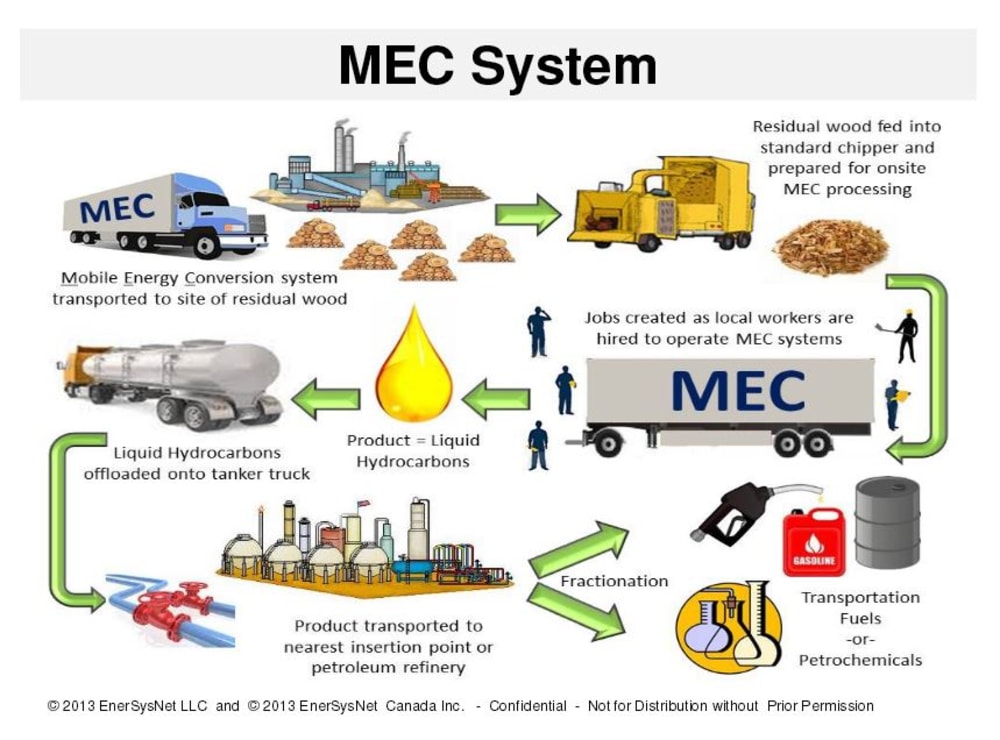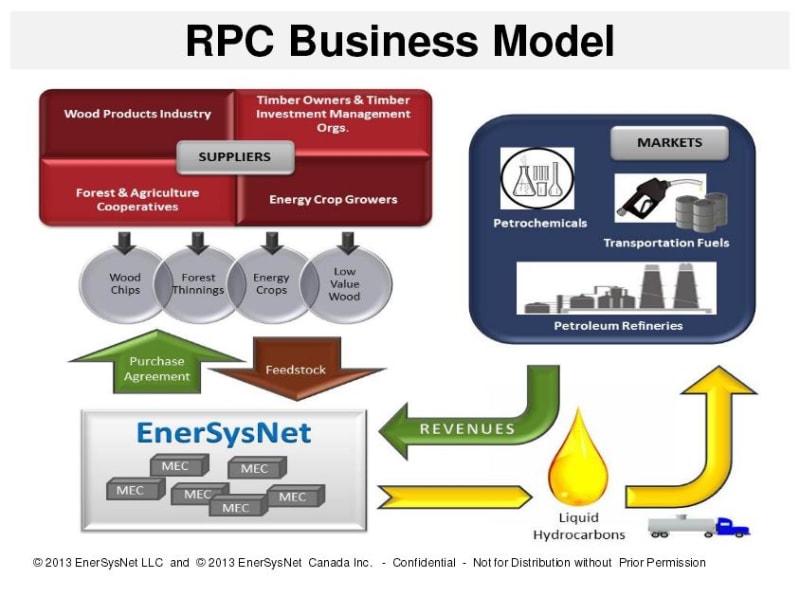Renewable Phenolic Compounds - Another Product of EnerSysNet's Mobile Energy Conversion Systems
Background
The wood products industry always manages waste and cost with an eye towards expanded profitability. For example, residual sawdust and chips in sawmill operations are bonded with wood adhesives containing phenol formaldehyde (PF) resin to produce engineered wood products such as particle board and Oriented Strand Board (OSB).
However, there is still waste – crowns and limbs at the harvest site and bark at the processing mill – that are usually burnt or buried in a landfill. Instead of burning, what if the waste could be turned into a more environmentally-friendly adhesive which costs less and potentially increases sales for the adhesive manufacturer?
Pyrolysis of biomass materials is known to produce a complex mixture of phenolic compounds, derived primarily from the lignin in the feedstock. These renewable phenolic compounds can substitute for up to 50% of the petroleum-based phenol in PF resins.
Phenol, the primary component in PF resin, is made from petroleum and its price and availability are linked to that of petroleum. Alternatively, the wood supply is sustainably managed with less price volatility.
In the early 1990’s, the National Renewable Energy Laboratory (NREL) joined with industrial partners to develop phenolic substitutes for commercial use in PF resins. NREL employed fast pyrolysis to produce phenol-like extracts from lignocellulosic wastes such as bark, sawdust and wood chips. Demonstrating comparable performance characteristics, these extracts substituted for up to 50% of the petroleum-derived phenol in the PF resin. The pyrolysis adhesives process received a prestigious R&D 100 award from R&D Magazine for being a technologically significant product. Several recent studies have confirmed that up to 50% of the phenol can be replaced with phenolic compounds derived from pyrolysis oil, and up to 2/3 of the formaldehyde concentration can be removed.
Market Considerations
In 1992, the United States used 1.2 billion pounds of phenol annually; of which, about 80% went into PF resin. However, oil prices were nominally $30/barrel; phenol sold for approximately $0.45/pound; and, pyrolysis oil was only available at laboratory scale. These factors combined to present no compelling reason for the wood products industry to switch from petroleum-based phenol.
Today, PF resins are the dominant adhesive used by wood composite manufacturers. The PF resin industry is valued at approximately $2.3 billion USD in North America and $10 billion USD worldwide.
• More than 95% of phenol is produced from petroleum-derived benzene and 35-40% of phenol produced in the U.S. is used for the production of PF resins.
• More than 70% of the PF resins are used in the forest products industry.
• Currently, oil is selling on the world market in a range from $70 to $120 USD per barrel and phenol is selling in a range from $0.67 to $0.82 USD per pound.
Commercial Objective
EnerSysNet (ESN) will produce renewable phenolic compounds from forest biomass that can replace up to 50% of petroleum-derived phenols in PF resin for half the current phenol price.
Like this entry?
-
About the Entrant
- Name:Jim Colthart
- Type of entry:individual
- Patent status:pending





